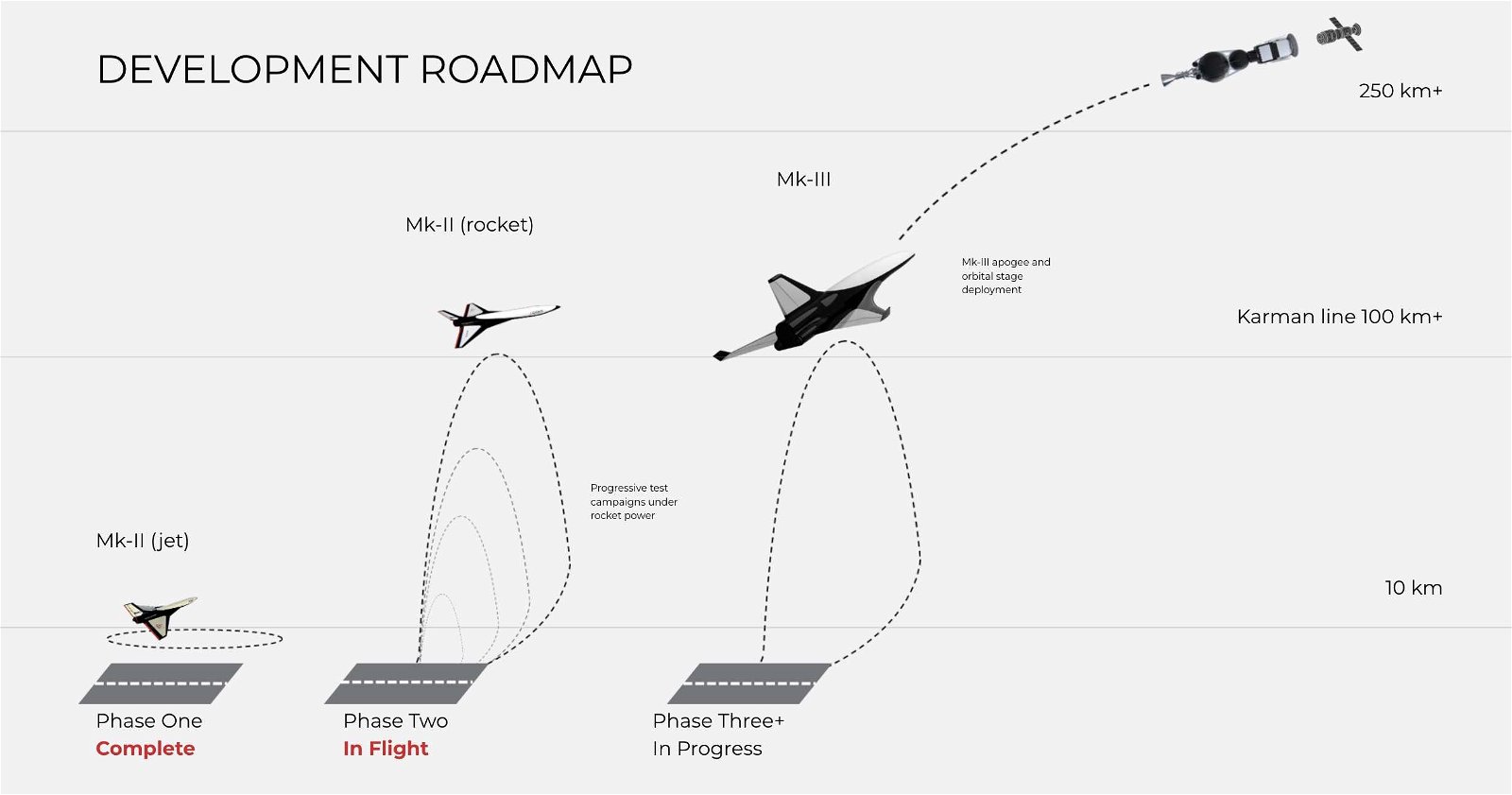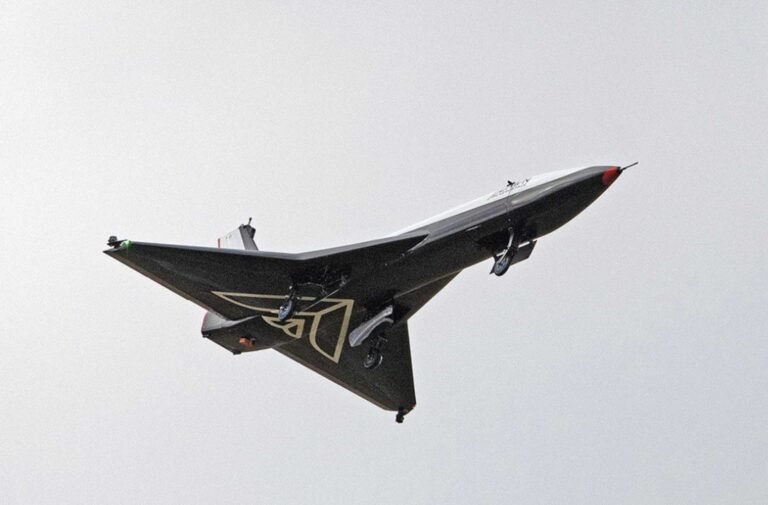

Welcome to this week’s installment of The Intelligence Brief… with the announcement this week by New Zealand’s Dawn Aerospace of the successful rocket-powered test flight of its new Mk-II Aurora space plane, we’ll be looking at 1) the company’s initial experimental rocket flight, 2) how Dawn Aerospace plans to produce a more sustainable means of space flight, 3) the key components the recent tests of its space plane were able to validate, and 4) how this sets the stage for the company’s plans for its forthcoming orbital program.
Quote of the Week
“The rockets and the satellites, spaceships that we’re creating now, we’re pollinating the universe.”
– Neil Young
Latest Stories: Ahead of this week’s analysis, a few of the big stories we’ve covered in recent days include how researchers from the international think tank Applied Physics say they have created an artificial black hole in the lab that will help bring about the development of a working warp drive spaceship. Elsewhere, the U.S. Missile Defense Agency reports the completion of a landmark ballistic missile intercept during a recent Aegis system test. You can find links to all our recent stories at the end of this newsletter.
Podcasts: This week in podcasts from The Debrief, join Stephanie Gerk and MJ Banias as they discuss why they feel they could do a better job naming weird space objects than NASA, and MJ calculates the speed at which a cat would fly if propelled by an asteroid impact on The Debrief Weekly Report. Meanwhile, this week on The Micah Hanks Program, I go in pursuit of the modern legends that have become associated with Area 51, how it became a mainstay of American conspiracy theories, and look at the history–as well as the speculations–involving America’s best-known secret base. You can subscribe to all of The Debrief’s podcasts, including audio editions of Rebelliously Curious, by heading over to our Podcasts Page.
Video News: In the latest installment of Rebelliously Curious, Chrissy Newton is joined by Bryan Bender, a former POLITICO award-winning National Security Reporter, and Editor turned Strategic Communications Advisor, to discuss the process of news dissemination and how he was first seeded the 2017 New York Times breaking UAP news. You can also watch past episodes and other great content from The Debrief on our official YouTube Channel.
With all the housekeeping out of the way, it’s now time to turn our attention to how the successful test flight of a rocket-propelled spacecraft brings us one step closer to a more sustainable future in space.
Mk-II Aurora Blasts Off with Rocket Propulsion
The first rocket-powered flight campaign of the Mk-II Aurora Space Plane was successfully completed, according to its developers at Dawn Aerospace.
The company, who operates in New Zealand, the United States, and the Netherlands, said in a statement that the recent flights took place between March 29 and 31 at New Zealand’s Glentanner Aerodrome.
With capabilities that include aircraft-like operations and the ability to take flight several times a day, Mk-II Aurora and other vehicles produced by Dawn Aerospace are capable of horizontal takeoff and landing, which removes the requirement for having a dedicated launch pad like traditional rocket-powered spacecraft.


Recognized as one of the world’s quickest up-and-coming producers of green space propulsion technologies, Dawn Aerospace says the successful flight “signifies a major milestone in the company’s mission to revolutionize space access,” which includes the company’s aims to “provide end-to-end space transportation,” and to begin development of an orbital program scheduled to follow completion of delivery of the Mk-II Aurora.
The tests at Glentanner Aerodrome in late March were the first to include rocket-powered flight, with all previous tests conducted using jet engines. The company said it reached all objectives during last week’s experimental flight.
“Rapid Reusability”
Stefan Powell, the company’s CEO, said that to have delivered rapid reusability in the earliest testing phases offers “confirmation that rocket-powered vehicles can be operated just like commercial jet aircraft,” a primary focus of the company’s designs.
“This fact allows us to rapidly test now, but in the future, it will completely revolutionize the economics of space access,” Powell said in a statement.
Primarily, Dawn Aerospace says its mission is to provide sustainability as well as accessibility to scalable space technologies. “This means challenging the fundamentals of how we get to space and move around in space,” the company’s website states.
Dawn Aerospace says it has more than four dozen of its products already in orbit, with its current efforts behind its promising Space Launch program serving as its primary focus.
Validating Flight Capabilities
Last week’s flights focused on the validation of several capabilities and systems, chief among them the space plane’s rocket engine. However, during testing, the Mk-II Aurora’s recent flight still kept it far from its maximum flight performance capabilities.
The Mk-II Aurora is designed to be capable of flight to altitudes exceeding 60 miles (around 100 km) once it enters commercial operations and aims to become the first craft able to complete two flights per day, showcasing both its delivery and reusability in the burgeoning commercial space industry.
According to a statement, initial flights under rocket power reached approximately 6,000 feet and 170 knots, altitudes and speeds they said were comparable to previous test flights conducted with jet engines.
Future experimental flights will work toward reaching higher altitudes and gauging the aircraft’s maximum speeds.
The Path Toward Orbital Operations
Once the Mk-II Aurora program is complete, Dawn Aerospace plans to move forward with the production of the Mk-III, which will comprise a two-stage orbital vehicle.
Mk-III will be designed for the transport of payloads exceeding one ton to suborbital flight, enabling the delivery of a 550-pound satellite to low Earth orbit.


Powell said that the Mk-III, like the Mk-II before it, “is designed to be 96% reusable,” citing that the main area where the space industry contributes to the production of carbon dioxide and other compounds is in the production and manufacturing—not the fuel efficiency—of rocket usage.
“This is key to delivering on our vision of a sustainable and future-proof space industry,” Powell said in a statement, calling the recent test flight of the Mk-II Aurora “a monumental achievement,” which will propel the Aurora toward being recognized as “the most rapidly reusable rocket-powered aircraft in operation.”
That concludes this week’s installment of The Intelligence Brief. You can read past editions of The Intelligence Brief at our website, or if you found this installment online, don’t forget to subscribe and get future email editions from us here. Also, if you have a tip or other information you’d like to send along directly to me, you can email me at micah [@] thedebrief [dot] org, or Tweet at me @MicahHanks.


Here are the top stories we’re covering right now…
- Pentagon Launches Classified Program To Reverse-Engineer and Exploit Emerging Tech and Cyber-Physical Systems
The DoD has launched a new classified program to find ways to both attack and defend emerging technologies and cyber-physical systems.
- Antineutrino Detection Breakthrough Using Pure Water Captures Signal from Distant Nuclear Reactor
A breakthrough in the detection of antineutrinos using pure water rather than a liquid scintillator has been made, according to an international team of scientists.
- A Plant Communication First: Scientists Detect Sounds Likened to Ultrasonic ‘Distress Signals’ from Plants
Researchers have recorded and analyzed ultrasonic airborne sounds produced by plants under stress, which can even reveal the plant’s type and condition
- Will Future AI Systems be Legally Liable?
Future risks from AI systems may include controlling WMDs and the forgery of scientific results. Who should be held liable for such actions?
- UFO Documentary ‘Accidental Truth’ Makes Strongest Case Yet for Crash Retrievals, Vehicles of Non-Human Origin
A brand new, award-winning documentary from MUFON TV founder Ron James presents an impassioned argument that UFOs have crashed here on earth and that they are of non-human origin.
- Physicists Prove Famous Double-Slit Experiment Can Be Recreated in Time, Not Just in Space
The famous double slit experiment has been recreated by physicists who say they have now achieved it in time, rather than in space.
- “Black Hole” Created Using Sound Waves Could Help Enable the Development of a Physical Warp Drive
Researchers from the international think tank Applied Physics say they have created an artificial black hole in the lab that will help bring about the development of a working warp drive spaceship.
- Breakthrough Ballistic Missile Intercept Demonstrated by U.S. Missile Defense Agency in Aegis System Test
The U.S. Missile Defense Agency reports the completion of a landmark ballistic missile intercept during a recent Aegis system test.
- The U.S. Air Force and Raytheon are Finally Ready to Unleash StormBreaker
After nearly two decades of research and development, Raytheon Technologies is preparing to deliver 1,500 StormBreaker smart weapons to the U.S. Air Force and U.S. Navy.
- The Strange Death of Rockstar and Tech Mogul Philip Taylor Kramer Remains Baffling Almost Three Decades After His Disappearance
The bizarre 1995 disappearance and reported suicide of Iron Butterfly bassist Philip Taylor Kramer has left many wondering for decades what really happened.
- Another One Bites the Alien Space Dust… This week on The Debrief Weekly Report…
On today’s episode, a new report from NASA indicates Earth may have a big asteroid problem, astronomers have discovered a novel space object, and scientists out of Tokyo want to search cosmic dust for signs of alien life.
- Fast Radio Bursts Could Be Solved With Help From a 24-Year-Old Transplant Survivor
An international team of researchers says that they may have discovered something new about fast radio bursts that could help scientists determine more about their nature.
- A Mysterious Midnight Celestial Event Was Detected Using a Cold War Spying Technique
A seldom-seen midnight celestial event reportedly occurred in recent weeks, marking what may be just the second time the rare solar phenomena has been observed in more than a decade.
- Exotic Propulsion: Technological Probes From the Final Frontier
By studying interstellar objects, we may learn about new exotic propulsion methods that will make it easier for us to venture into interstellar space.
- New Study Reveals Sharp Decline in American IQ Scores as the “Reverse Flynn Effect” Takes Center Stage
A new study found a sharp decline in American IQ scores in recent years, offering support for what researchers term the “Reverse Flynn Effect.”
- Bryan Bender: Meet the Journalist Who Nearly Broke the Pentagon UFO Story Before the New York Times
Chrissy Newton talks with Bryan Bender about the process of news dissemination and how he first learned about the 2017 New York Times UAP story.
- Superintelligence: An A.I. Takeover Scenario
This week on The Micah Hanks Program, we look at several potential future scenarios involving the creation of an A.I. superintelligence and whether they could spell problems for us in the future.
